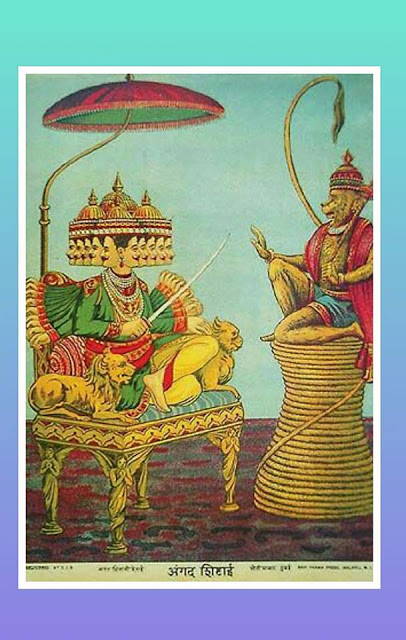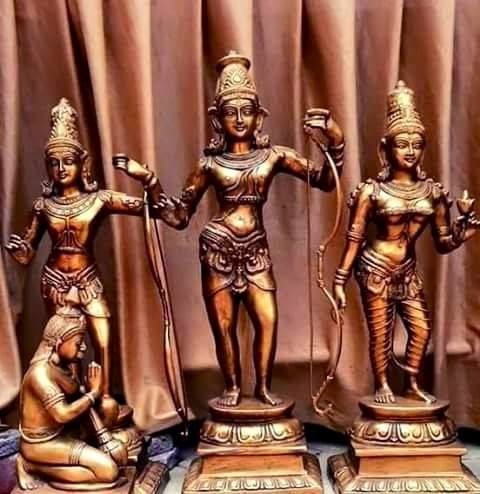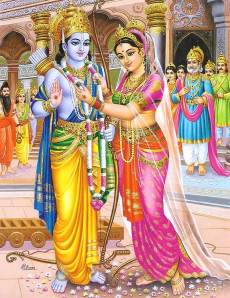
Written by LONDON SWAMINATHAN
Date: 31 JULY 2018
Time uploaded in London – 13-46 (British Summer Time)
Post No. 5275
Pictures shown here are taken from various sources such as Facebook friends, Wikipedia, Books, Google and newspapers; thanks. Pictures may be subject to copyright laws.
Famous Tamil poet Kamban in his epic work Kamba Ramayana explodes several Dravidian myths; Dravidian politicians and half- baked Dravidian ‘scholars’ are fooling the Tamil community for long by projecting the womaniser Ravana as a Dravidian. They say Aryan Rama killed Dravidian Ravana; They even celebrate Ravana Jayanti on Rama Navami day or Desersa Festival. But according to the famous poet Kamban, who wrote Ramayana in Tamil, Ravana was a Brahmin!

My mum wants Rama’s Skull for Tarpana!
Here is the proof from Tamil verses of Kamban:-
When Ravana lost his important commanders in the battle against Rama, Karan’s son came forward and said to Ravana:
“How is it my father (Ravana), you didn’t send me
Against who killed my father (Karan)?
Did you not know I am available
Alas, that you should have that sorrow!”
“My tearful mother, plunged in sorrow
Will not part with her wedding-string
Before offering obsequies to her husband
In the skull of the one who killed him!
You whom the vultures love as their feeder
Be pleased, said he, to send me to the fight.”
Wedding string= Mangala sutra, Thaali in Tamil.
The message is clear: Demons also do Tarpana and Tithi to the departed soul. So Karan’s wife was waiting to do using Rama’s skull as a vessel!
In another place, when Vibhishana asked his brother Kumbakarna to come to Rama’s side, he refused to join Rama’s army because he did eat Ravana’s food all through his life and he did not want to see Ravana dying before his eyes. He added, “My dear brother Vibhishana! You continue to be in Rama’s side, so that you can do Tarpana (water offering to departed soul) to all your brothers including me”.
So they all believed in the funeral tites like other Hindus.
Rama encourages Karan’s son to fight him saying,
“The hero (rama) heard what the sinner (karan’s son) said
Are you Khara’s son come here
To avenge your long-standing grievance?
That indeed is a son’s duty
You spoke well, Sir”, he said,
His shoulders well fitted for fame”
–Yuddha Kanda, Kamba Ramayana
Here also Rama appreciates son’s duty to demon Khara.

Here is another proof:
“Such is the strength of these men.
I will tell you now what I know of Ravana
He is the son of the son of Brahma
And raised himself through penance
By the boons he obtained from Brahma and Siva”
-Yuddha Kanda
Kamban repeats three facts in hundreds of places:
- Ravana is Brahma’s grandson, thus emphasizing that he is a Brahmana.
This is confirmed in several Tamil sthala puranas, where Rama was said to have got rid of his sins of killing Brahmins (Ravana and his son’s).
- Ravana and his son Indrajit got all the powers from Hindu gods through penance!
- They all did water obsequies to the departed souls like any other Hindu.
All these explode the Dravidian propaganda about Ravana.
Kamban lived 1000 years before our time. What Kamban said was already said by Valmiki and others.

One more verse from the chapter of ‘Vibhishana takes refuge’ in Yuddha Kanda:
“The son of Brahma’s grandson
A good soul, truthful and virtuous,
has come here to take refuge
With the scion of solar race
The Lord of the world, and so live:
This is about Ravana’s brother Vibhishana.
Any one reading Kamba Ramayana or other scriptures will find umpteen references to Ravana and his brothers as Brahmins.
Then how come they are called demons?
They did not follow a disciplined life and more over violated all the rules laid for Brahmins. They got all the benefits and powers of penance, but abused them!
Even today we see people who abuse religious powers even when they are at the top posts.
–Subham–





































You must be logged in to post a comment.